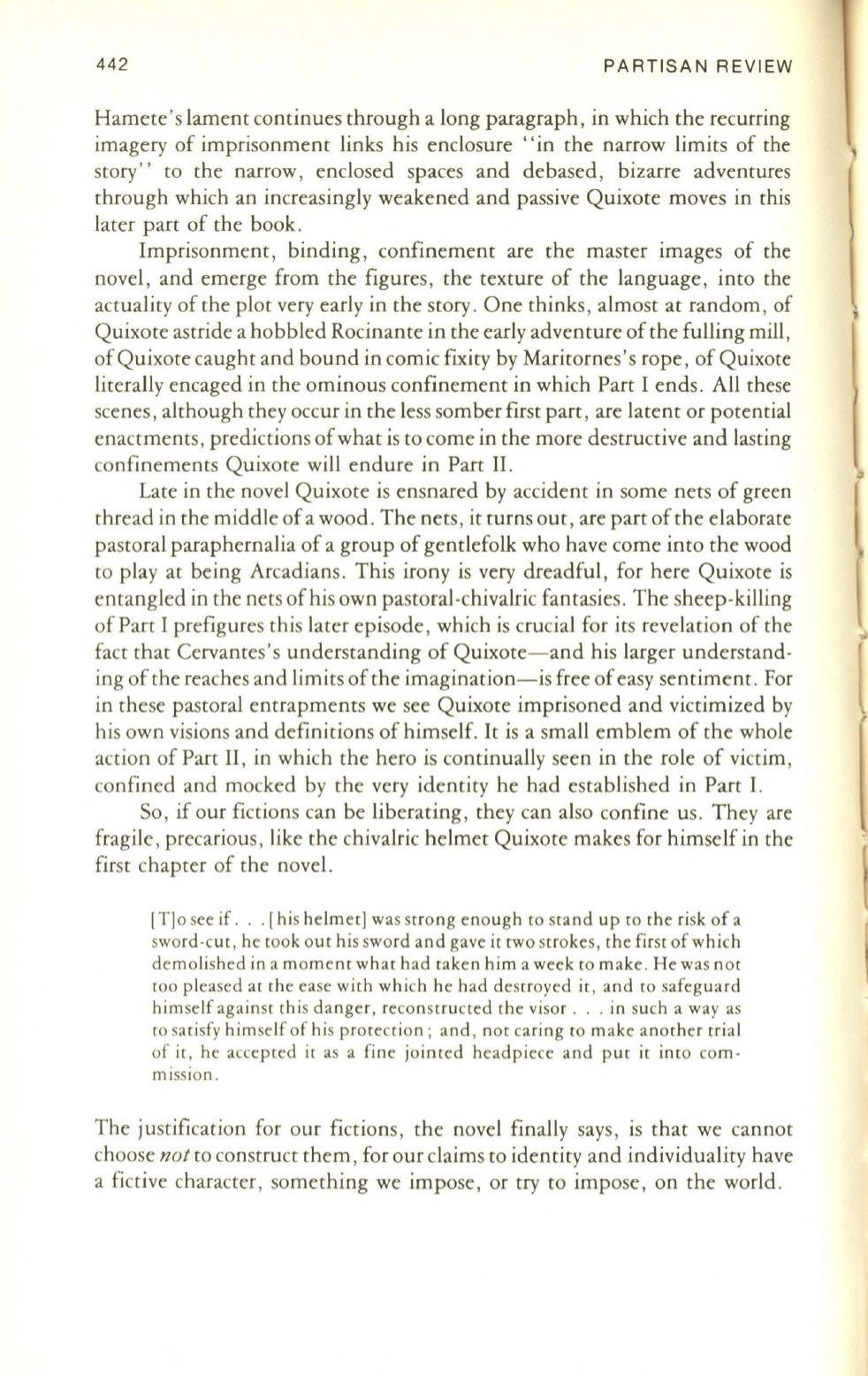
442
PARTISAN REVIEW
Hamete's lament continues through a long patagraph, in which the recurring
imagery of imprisonment links his enclosure "in the narrow limits of the
story " to the natrow, enclosed spaces and debased, bizatre adventures
through which an increasingly weakened and passive Quixote moves in this
later part of the book.
Imprisonment, binding, confinement ate the master images of the
novel, and emerge from the figures, the texture of the language, into the
actuality of the plot very early in the story. One thinks, almost at random, of
Quixote astride a hobbled Rocinante in the eatly adventure of the fulling mill,
of Quixote caught and bound in comic fixity by Maritornes' s rope, of Quixote
literally encaged in the ominous confinement in which Part I ends. All these
scenes, although they occur in the less somber first part, are latent or potential
enactments, predictions ofwhat is
to
come in the more destructive and lasting
confinements Quixote will endure in Patt II.
Late in the novel Quixote is ensnared by accident in some nets of green
thread in the middle of a wood. The nets, it turns out, are part of the elaborate
pastoral paraphernalia of a group of gentlefolk who have come into the wood
to
play at being Arcadians. This irony is very dreadful, for here Quixote is
entangled in the nets of his own pastoral-chivalric fantasies . The sheep-killing
of Part I prefigures this later episode, which is crucial for its revelation of the
fact that Cervantes's understanding of Quixote-and his larger understand–
ing of the reaches and limits of the imagination-is free ofeasy sentiment. For
in these pastoral entrapments we see Quixote imprisoned and victimized by
his own visions and definitions of himself.
It
is a small emblem of the whole
action of Part II, in which the hero is continually seen in the role of victim,
confined and mocked by the very identity he had established in Patt
1.
So, if our fictions can be liberating, they can also confine us. They ate
fragile, precarious, like the chivalric helmet Quixote makes for himself in the
first chapter of the novel.
[T)osee if. . [his helmet) wassrrong enough to stand up to the risk ofa
sword-cut , he took out his sword and gave it two strokes, the first of which
demolished in a moment what had taken him a week to make . He was not
too pleased at the ease with which he had destroyed it, and to safeguard
himself against this danger, reconstructed the visor. . in such a way as
to satisfy himself of his protection ; and, not caring to make another trial
of it, he accepted it as a fine jointed headpiece and put it into com–
miSSIOn .
The justification for our fictions, the novel finally says, is that we cannot
choose
not
to construct them, for our claims to identity and individuality have
a fictive character, something we impose, or try to impose, on the world.


